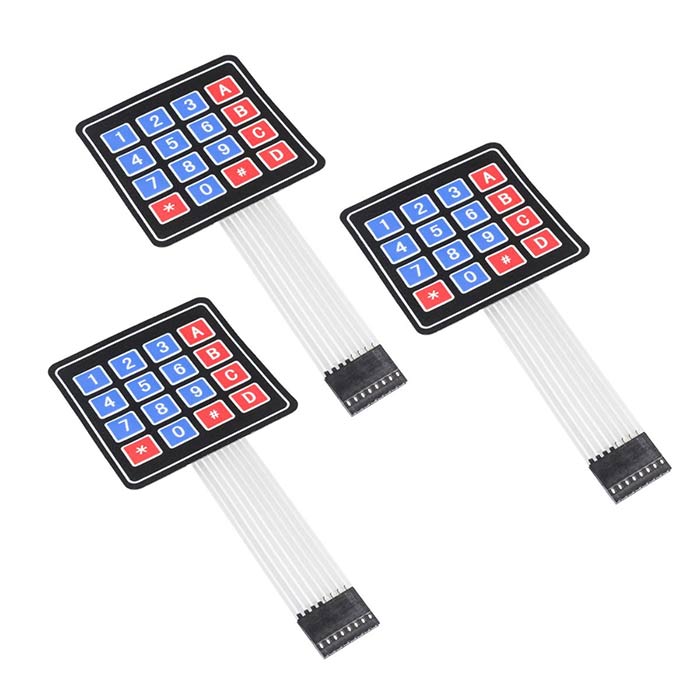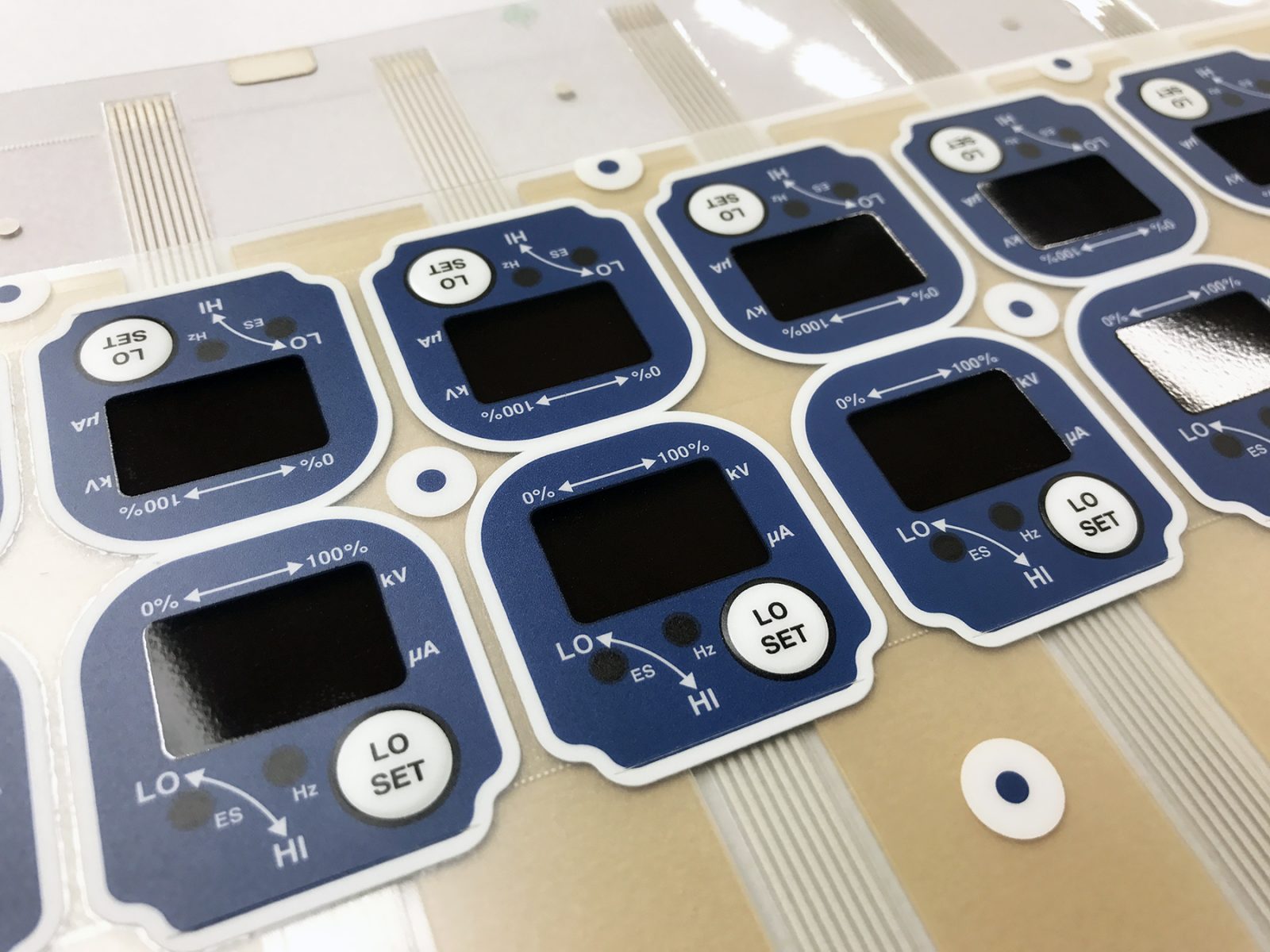An forward-thinking membrane switch manufacturer can offer next-gen features and materials.
An forward-thinking membrane switch manufacturer can offer next-gen features and materials.
Blog Article
All About Membrane Layer Change: Recognizing Its Design and Performance
When you assume regarding the control user interfaces in modern gadgets, membrane layer buttons usually come to mind. Let's explore what collections membrane changes apart from other control systems.
What Are Membrane Layer Buttons?

Their seamless nature makes them easy to clean and resistant to dust and dampness, an important attribute in many atmospheres. Membrane switches can additionally be personalized concerning form, size, and graphics, enabling producers to create unique user interfaces customized to particular products. Plus, they're light-weight and slim, which assists in minimizing the overall mass of tools. Generally, membrane buttons play a substantial function in improving user experience throughout a wide range of applications.
Exactly How Membrane Layer Switches Over Job
When you press a trick on a membrane layer switch, it triggers a straightforward yet effective system. membrane switch manufacturer. The top layer, usually made of flexible material, presses down onto a conductive layer below it.
You'll notice that the responsive feedback varies based on the button style, supplying either a soft click or a more noticable response. Once you launch the key, the membrane returns to its initial setting, reopening the circuit and stopping the signal. This process takes place nearly instantly, ensuring a receptive user experience.
Membrane layer switches are prominent because of their durability and resistance to dirt and moisture, making them suitable for different applications, from house devices to medical tools. Understanding this procedure aids you value their extensive usage.
Trick Elements of Membrane Layer Buttons
Recognizing the key parts of membrane buttons is essential for realizing their performance and design. The safety layer shields against environmental elements and put on, expanding the button's life expectancy. By comprehending these elements, you'll obtain insight into just how membrane switches over run and their significance in various applications.
Materials Made Use Of in Membrane Switch Over Layout
The efficiency and longevity of membrane switches over heavily depend upon the materials utilized in their layout. You typically come across polyester and polycarbonate as primary substrates because of their excellent strength and versatility. These products resist scratches and chemicals, making them suitable for demanding environments.
The conductive layers typically make use of silver or carbon, chosen for their reliability and conductivity. membrane switch manufacturer. Silver supplies premium performance, while carbon is a cost-efficient option. For the overlay, you may consider a matte or glossy coating, relying on your aesthetic demands and customer experience
Adhesives play an important function as well; they bond layers firmly and guarantee long life. Make sure to select adhesives that withstand ecological aspects like temperature and humidity. Do not neglect the value of a great printing method for graphics, as it boosts both functionality and aesthetic allure. Picking the ideal materials will certainly assure your membrane layer button stands the examination of time.
Layout Factors To Consider for Membrane Layer Switches
While designing membrane buttons, it's crucial to consider various factors that influence go to this site their capability and individual experience. Start by concentrating on the format and button size; ensure they're instinctive and very easy to navigate. Think about the responsive comments you desire to provide-- will customers require an obvious click or a softer touch? Furthermore, think of the products you'll make use of, as they'll influence durability and aesthetics.
Confirm your layout suits environmental aspects, like moisture or temperature variants, which can affect performance. By meticulously thinking about these aspects, you'll create a membrane layer button that boosts use and complete satisfaction.
Applications of Membrane Switches
Membrane buttons are functional parts found in numerous applications, from commercial equipment to customer electronic devices. You'll see their effect in devices that need resilient interfaces and in tools that take advantage of smooth layouts. Recognizing these applications helps you value the performance and practicality of membrane layer switches in day-to-day technology.
Industrial Equipment Usage
When you're looking to enhance the capability of industrial tools, membrane buttons supply a reputable remedy that combines toughness with user-friendly style. These buttons are perfect for severe atmospheres, supplying resistance to dust, wetness, and chemicals. Embrace membrane switches to simplify your procedures and boost total efficiency.
Customer Electronic Devices Assimilation
In the domain name of customer electronics, membrane switches play an important duty in improving user communication and gadget performance. You'll find them in devices like microwaves, push-button controls, and pc gaming consoles, offering a smooth way to interact with innovation. Their smooth style enables simple integration into numerous products, making controls user-friendly and straightforward. With their ability to include graphics and backlighting, you can take pleasure in a modern-day visual that matches the gadget's total appearance. Membrane switches also assure sturdiness and resistance to dust and wetness, expanding the life-span of your electronics. By choosing membrane buttons, you improve not simply the functionality however likewise the style of see post your tools, making everyday communications smooth and pleasurable.
Advantages and Disadvantages of Membrane Buttons
While membrane buttons use an array of benefits, they also come with some downsides that you ought to take into consideration. One considerable benefit is their small design, making them suitable for space-constrained applications.

Membrane layer switches can have a much shorter life-span contrasted to mechanical switches, particularly under hefty usage. They can also be less responsive, which might impact individual comments during procedure. Balancing these pros and cons will help you figure out if membrane layer switches are the best fit for your project.
Often Asked Inquiries
For How Long Do Membrane Changes Normally Last?
Membrane switches over usually last between 5 to ten years, relying on use and environmental conditions. You'll intend to assess variables like wear, exposure to dampness, and temperature changes to evaluate their long life effectively.
Can Membrane Changes Be Custom-made for Specific Designs?
Yes, you can customize membrane switches to fit certain designs (membrane switch manufacturer). You'll have the flexibility to choose shades, forms, and formats that match your project's needs, guaranteeing they blend perfectly with your overall visual
What Is the Price Array for Membrane Layer Switch Over Manufacturing?
The price array for membrane button try here production usually drops in between $1 and $10 per unit, depending upon aspects like layout complexity, amount, and products. You can obtain quotes from producers to locate the finest alternative.

Are Membrane Switches Over Water-proof or Resistant?
Membrane switches can be designed to be water-proof or resistant, depending on materials utilized and building techniques. If you require them for damp settings, guarantee you specify those needs throughout the layout procedure.
How Do Membrane Switches Over Contrast to Traditional Buttons?
Membrane switches are typically thinner and more flexible than typical switches, providing a smooth layout. They're commonly less complicated to clean and incorporate, but may not supply the tactile responses you're used to with mechanical options.
Final thought

Report this page